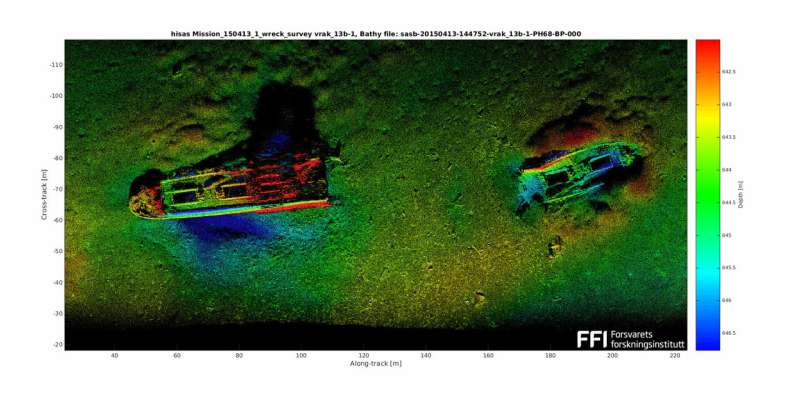Munitions at the bottom of the Baltic Sea

The bottom of the Baltic Sea is home to large quantities of sunken munitions, a legacy of the Second World War—and often very close to shore. Should we simply leave them where they are and accept the risk of their slowly releasing toxic substances, or should we instead remove them, and run the risk of their falling apart—or even exploding? Administrators and politicians face these questions when, for example, there are plans for building a new wind park, or laying an underwater cable. In the course of the international project DAIMON, researchers prepared essential decision-making aids, which were recently presented at the Thünen Institute in Bremerhaven/Germany.
The total amount of conventional munitions and chemical weapons in German waters is estimated at 300,000 metric tons. They were dumped in the water at the war's end, with little thought given to the consequences for the environment. For example, just a stone's throw from Kiel you'll find the munitions dumping area 'Kolberger Heide' - a restricted area in which ca. 35,000 metric tons of sea mines and torpedoes lie below the (max. 12-metre-deep) water and can be seen from the beach. These munitions can still be dangerous even after decades on the seafloor, as an international team of researchers recently confirmed: the findings of the DAIMON (Decision Aid for Marine Munitions) project were presented at a conference jointly hosted by the Thünen Institute and Alfred Wegner Institute in Bremerhaven from 5 to 7 February 2019.
Through painstaking efforts, the contributing researchers collected samples and analysed the chemicals being released by the munitions. Traces of the munitions could be found in fish from dumping areas; these included metabolites of TNT and chemical weapons containing arsenic. Mussels that were exposed to the conditions in 'Kolberger Heide' in small net cages accumulated TNT metabolites—clear proof that the bombs are still releasing toxic substances, which are absorbed by local biota. The researchers also confirmed that TNT is poisonous for mussels and causes genetic damage in fish, which can produce tumours. Specimens of the common dab, a sensitive flatfish species, caught in 'Kolberger Heide' had more liver tumours than specimens from other waters, which indicates a causal relation between local TNT pollution and increased tumour rates. The metabolites of TNT are also mutagenic; as a result, marine organisms are still being affected by the munitions, even if the rapidly decomposing TNT itself is only a distant memory.
The results of this and other investigations were in turn used as the basis for practically and directly applicable recommendations on environmental monitoring and how to handle dumped munitions. As such, the chief outcomes of the DAIMON project are guidelines for monitoring and assessing risks: a collection of methods from the field of environmental monitoring that can be used to assess the acute risks to the ecosystem posed by munitions (DAIMON Toolbox), as well as a web-based system (Decision Support System) to help e.g. politicians and government offices decide whether munitions e.g. in the Baltic Sea should simply be monitored, or should be removed. During the conference, there was a live demonstration of the system, which was also available for interested participants to try.
The event was jointly organised by the Alfred Wegener Institute, Helmholtz Centre for Polar and Marine Research and the Thünen Institute of Fisheries Ecology. More than 100 participants from the research, administrative, political and industrial communities attended.
Provided by Alfred Wegener Institute



















